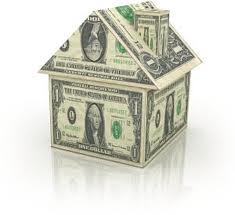
How do you calculate the actual rate of return you can expect from this opportunity, that is tailed to your specific financing method?
We will use a quasi-quantitative model that many investors can apply easily.
The essence of this model is to figure out the positives and negatives of a real estate opportunity.
Let's start with the following assumptions:
The property's price is $200K, you will purchase it with 20% down and rest with a loan at 5% interest rate. The rent is $1,500 per month, estimated expenses (excluding mortgage expense) combined are $200 per month.
The Positives of Owning This Property
a. Property value appreciation
Let's assume its annual appreciation rate is 2% (which is norm for most of the nation). Please note this 2% is based on the entire property's value.
b. Rental income and potential increase
Assume rental income has no projected increase, also, it's normal to expect average 1 month's vacancy each year, so the annual return from the rental income is $1300*11/$200K = 7.2%. Please note this rate is based on the entire property's value of $200K.
The Negatives of Owning This Property
a. Property Tax
Local government relies property taxes to support its operation, let's assume your property tax rate is 1.2% - please note this is based on property value.
b. Insurance/HOA
We will assume annual insurance and HOA cost is $1,200, it is 0.6% of the property value ($1200/200K).
c. Mortgage Expenses
You are paying 5% interest rate on a $160K loan, this is equivalent to 4% of the property value ($200K).
d. Opportunity Cost
Your down payment of $40K (=20%*$200K) has opportunity cost. If you don't use it for this property, you can very well be investing it in stock market which has average 6% annual rate of return. This is equivalent to 1.2% of the property value (=$40K*6%/200K).
In Summary
Positive rates of returns = 2% + 7.2% = 9.2%
Negative rates of returns = 1.2%+0.6%+4%+1.2% = 7.0%
Note the above comparison is based on apples to apples basis with both using the property value of $200K as the basis. Since the 9.2% is greater than the 7%, it appears to be an investment worth pursuing.
A warning, the above calculations fail to consider any labor costs incurred by you, as the property owner. Before committing yourself as a landlord, ask yourself - is this party time really for me?
This quasi-quantitative model is fairly easy to apply, but it fails to give you the actual rate of return you will get from this investment.
We will develop a truly quantitative model to evaluate your actual rate of return on any investment opportunity, and discuss in our next blog post.

 RSS Feed
RSS Feed
